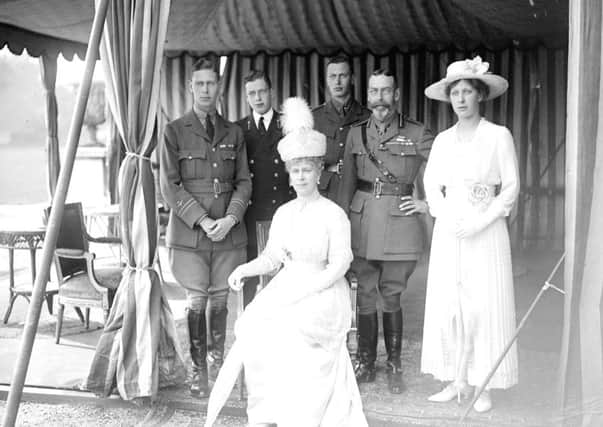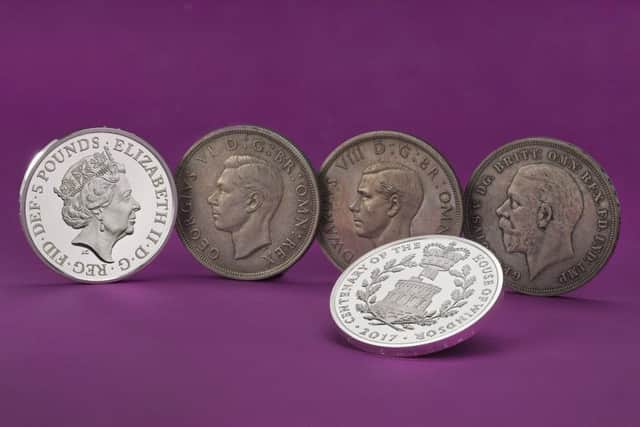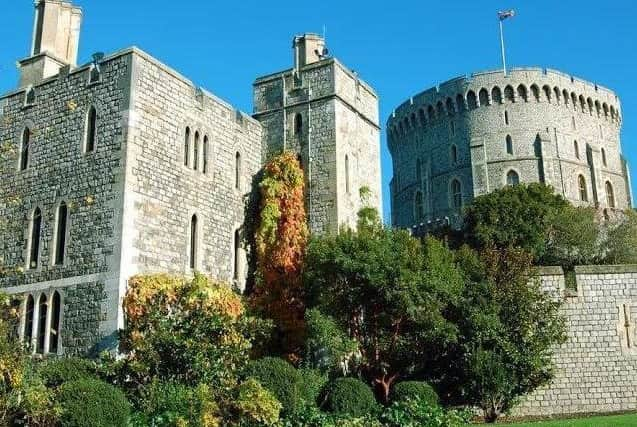Royal family's radical name change 100 years ago today was '˜clever piece of branding'


The surname Saxe-Coburg-Gotha was abandoned in favour of creating the House of Windsor, which endures to this day.
It has seen the Royals through a second world war against Germany, the marriage scandals of the 1990s and the criticism directed against the Queen following the death of Diana, Princess of Wales.
Advertisement
Hide AdAdvertisement
Hide AdAnd changing the name to Windsor was a “very good move” by the Queen’s grandfather, King George V, long before considerations about the ‘Royal brand’ became part and parcel of leading the monarchy, one historian has suggested.


Professor Jane Ridley said: “The effect of the First World War was to make people feel much more patriotic about being British, so having a monarch with a British surname was a clever piece of branding.
“There was another war coming. If in 1939 the royals had still had a German surname, and given the fact that many of the small German princes were rather friendly with Hitler, it would have been an extremely unfortunate situation, so it turned out in the long term to be a very good move.”
On July 17, 1917, the King issued a Royal proclamation changing the royals’ house and surname, declaring that they would “be styled and known as the House and Family of Windsor” and that they would “relinquish and discontinue the use of all German Titles and Dignities”.
Advertisement
Hide AdAdvertisement
Hide AdGeorge V’s decision followed concern in the press that asylum should not be offered to Russian royals following the revolution there, and criticism that the UK was at war with Germany but had German royals on its throne.


In June 1917, the Germans intensively bombed the East End of London with a new plane called the “Gotha” and staged a daylight raid on a primary school which killed 18 children.
Prof Ridley, an author and history professor at the University of Buckingham, said: “The coincidence of the Gotha bomber and the King’s surname being Saxe-Coburg-Gotha was obviously not very good publicity... They had already decided to change the name before the bombing, but it certainly made it more urgent.”
She added that the patriotic public welcomed the switch of name.
Advertisement
Hide AdAdvertisement
Hide AdAlthough George V had a lot of German relations, he actually came across as English, Prof Ridley said.


“He was very much an Englishman,” she said. “He didn’t speak with an accent. He hated travelling and spoke very bad German.”
Saxe-Coburg-Gotha had become part of the Royal family in 1840 with the marriage of Queen Victoria to Prince Albert.
Dynasties had changed throughout history, such as the Stuarts and the Hanoverians, but the decision to completely replace the name of those on the throne was a dramatic new move.
Advertisement
Hide AdAdvertisement
Hide Ad“There was lot of debate. Should they call themselves Tudor-Stuart or call themselves Guelph, which was the Hanoverian name?” Prof Ridley said.


“They got rather stuck until Lord Stamfordham (the King’s private secretary) had this brainwave and suggested Windsor.
“Windsor was incredibly English and the monarchy had been based at Windsor since the Middle Ages so it was a brilliant idea.”
Built in the 11th century, Windsor is Europe’s oldest and largest continually occupied castle.